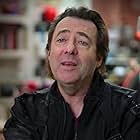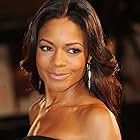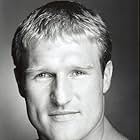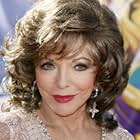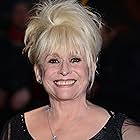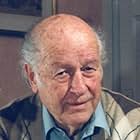Michael G. Wilson
- Self - Interviewee
- (as Michael G Wilson)
Joan Collins
- Self - Interviewee
- (as Dame Joan Collins)
Ray Harryhausen
- Self
- (archive footage)
- (uncredited)
Storyline
Did you know
- ConnectionsFeatures London Melody (1937)
Featured review
Once a cutting-edge presenter with THE LAST RESORT, Jonathan Ross has been seamlessly absorbed into the mainstream, with his Saturday night chat show follow in the venerable tradition of PARKINSON and RUSSELL HARTY PLUS.
Immaculately attired in blue blazer and gray slacks, he strutted arrogantly through this documentary celebrating eighty years of Pinewood Studios, interviewing celebs and generally having a good time trying out carefully choreographed stunts such as crashing a car with a stunt person, or sitting in the studio tank while watching another stunt person re-enact a sequence of a damsel in distress. Ross always looked thoroughly pleased with himself, as if he were well aware of his celebrity status and expecting his interview subjects to bow before him. Director John Hodgson emphasized his preeminence in this program by including several reaction shots of Ross grinning and smiling at his interviewees" reminiscences.
If we looked beyond Ross's smarmy charm into the real meat of this program, the subject-matter was of interest. Eighty years ago Pinewood Studios was opened by J. Arthur Rank as a direct response to Hollywood. He established his own dream-factory, supported by the Charm School, where wannabee actors learned how to speak perfect English and comport themselves properly on screen. Dame Joan Collins offered valuable reminiscences of this era, as she was transformed from a suburban miss into the archetypal "bad girl," before moving on to Hollywood.
One of the most poignant sequences came when Hayley Mills recalled her days of working at the studio with her father John and sister Annette: for that family, Pinewood became almost a second home. Likewise Dame Barbara Windsor, who spent much of the Sixties and Seventies filming the CARRY ON sequence of films there; although cheaply made, they were highly profitable at the box-office.
The program ended with a predictable narration of Pinewood's contribution to the major action films of the past three decades or so, including SUPERMAN, STAR WARS, and more recently KICK-ASS. To learn about the ways in which such effects were created was mildly interesting, but Hollywood studios do much the same thing, often on bigger budgets.
An interesting documentary, but it could have worked much better without Ross's presence at the center.
Immaculately attired in blue blazer and gray slacks, he strutted arrogantly through this documentary celebrating eighty years of Pinewood Studios, interviewing celebs and generally having a good time trying out carefully choreographed stunts such as crashing a car with a stunt person, or sitting in the studio tank while watching another stunt person re-enact a sequence of a damsel in distress. Ross always looked thoroughly pleased with himself, as if he were well aware of his celebrity status and expecting his interview subjects to bow before him. Director John Hodgson emphasized his preeminence in this program by including several reaction shots of Ross grinning and smiling at his interviewees" reminiscences.
If we looked beyond Ross's smarmy charm into the real meat of this program, the subject-matter was of interest. Eighty years ago Pinewood Studios was opened by J. Arthur Rank as a direct response to Hollywood. He established his own dream-factory, supported by the Charm School, where wannabee actors learned how to speak perfect English and comport themselves properly on screen. Dame Joan Collins offered valuable reminiscences of this era, as she was transformed from a suburban miss into the archetypal "bad girl," before moving on to Hollywood.
One of the most poignant sequences came when Hayley Mills recalled her days of working at the studio with her father John and sister Annette: for that family, Pinewood became almost a second home. Likewise Dame Barbara Windsor, who spent much of the Sixties and Seventies filming the CARRY ON sequence of films there; although cheaply made, they were highly profitable at the box-office.
The program ended with a predictable narration of Pinewood's contribution to the major action films of the past three decades or so, including SUPERMAN, STAR WARS, and more recently KICK-ASS. To learn about the ways in which such effects were created was mildly interesting, but Hollywood studios do much the same thing, often on bigger budgets.
An interesting documentary, but it could have worked much better without Ross's presence at the center.
- l_rawjalaurence
- Feb 27, 2016
- Permalink
Details
- Runtime59 minutes
- Color
Contribute to this page
Suggest an edit or add missing content
